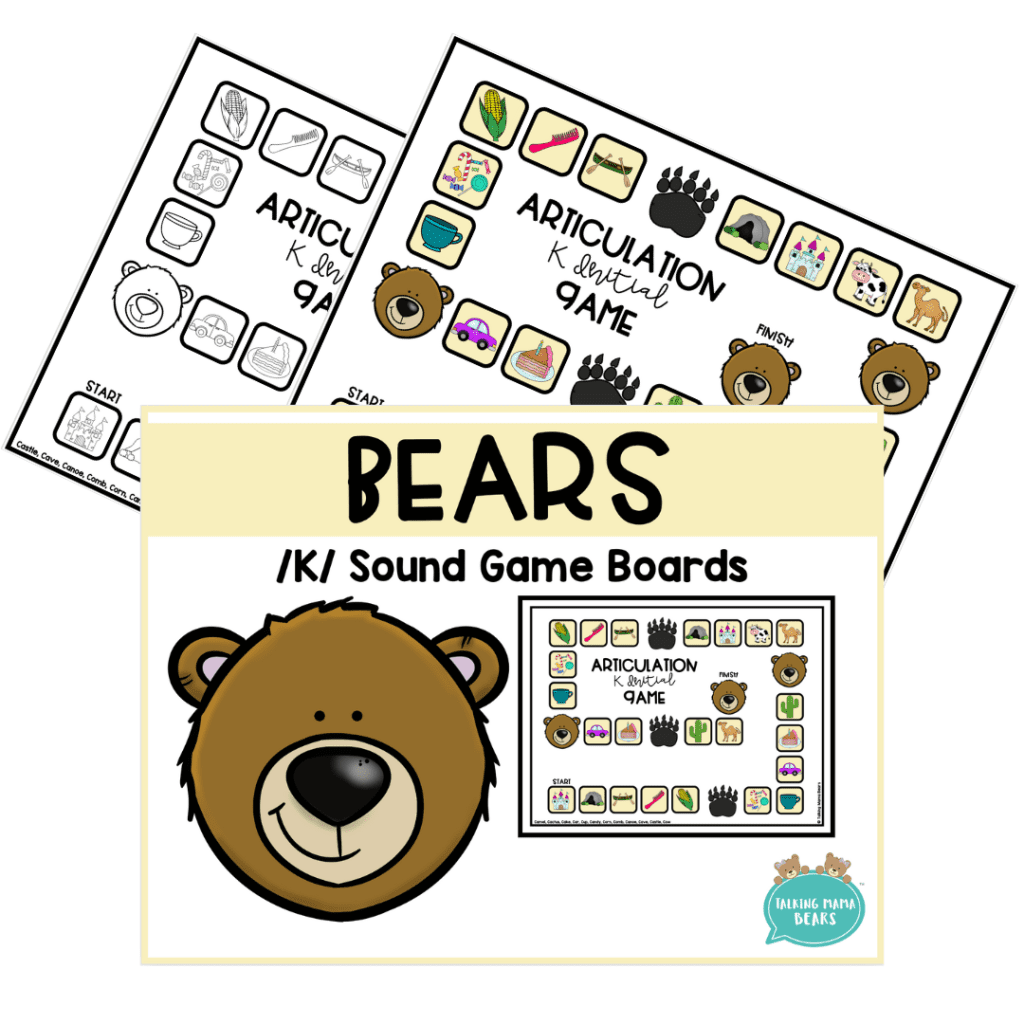This post may contain affiliate links, meaning we get a commission at no cost to you if you decide to make a purchase. As an Amazon Associate, we earn a small commission on qualifying purchases.
Do you have students that struggle with the production of /k/ or /g/ on your caseload? In need of some quick, but effective activities for the phonological process of velar fronting? If you have a student who struggles with this phonological error, students’ awareness levels can range from completely unfazed to extremely frustrated. We got you covered! Keep reading for examples, ideas, activities, and best of all, some fronting speech therapy FREEBIES!

What Is Fronting?
Velar fronting occurs when sounds that are produced in the back of the throat are pushed forward to the front of the mouth. For example, the sounds /k/ and /g/ are substituted with /t/ and /d/. Children often do this as a quick shortcut during early speech and language development, but it typically resolves by the age of three and a half. When this error persists past age three, these substitutions can make overall speech intelligibility very poor. Fronting is one of the many patterns referred to as a phonological process disorder.
Activities To Target Fronting
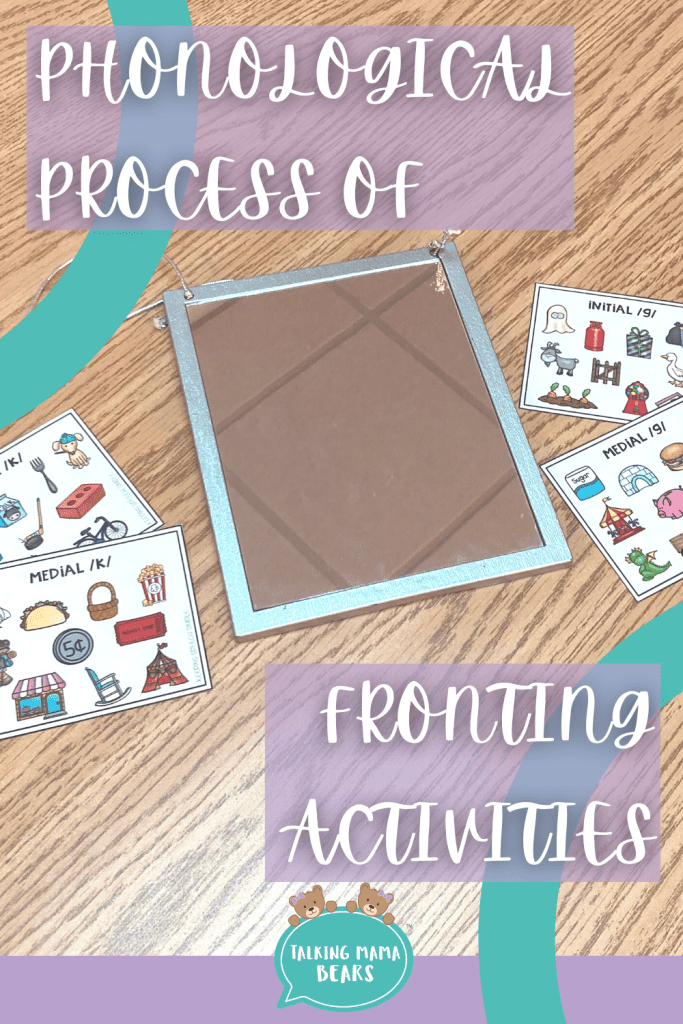
Auditory Discrimination
When targeting the phonological process of fronting, a good place to start is with some good old fashioned auditory discrimination. Understanding if a student is even accurately identifying either /k/ or /g/ can determine the direction of your therapy sessions.
We love to use books to provide lots of auditory examples and increase exposure to the velar sounds. Try sabotaging the story by incorrectly producing some of the target words. See if your students notice! If they do, have them explain how to repair the word.
Check out this book list below to target the velar fronting in your sessions!
- Goodnight Moon by Margaret Wise Brown
- Little Blue Truck by Alice Schertle
- DIG! by Andrea Zimmerman and David Clemsha
- The Little Engine That Could by Watty Piper
- Go, Go, Cars! by Simon Hart
- The Icky Bug Alphabet Book by Jerry Pallotta
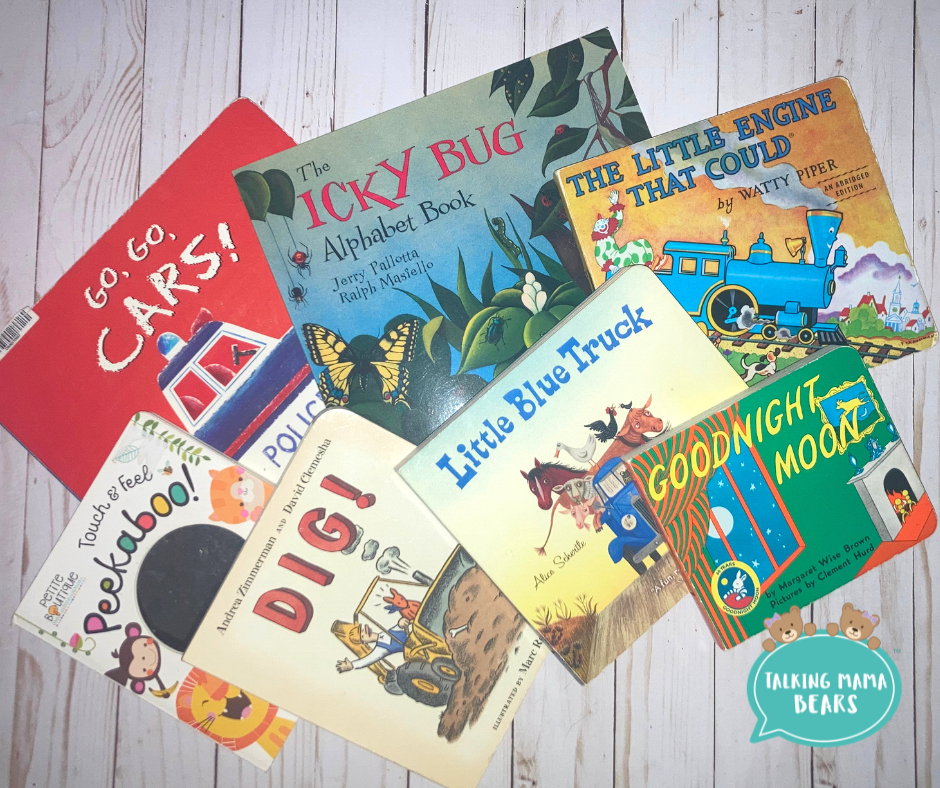
Read Also: Best Fall Books To Use For BOTH Speech & Language Therapy!
Auditory Bombardment
Another great way to begin targeting the phonological process of fronting is to complete an auditory bombardment activity to start a session. Simply read aloud a list of target words and have your student listen while coloring or holding a fidget.
Working in auditory bombardment activities to each fronting session encourages sound development but also helps with the long term generalization of sounds into conversation.
Read Also: How To Effortlessly Plan 15 Activities For Final Consonant Deletion
Mouth Model
The production of velar sounds can be challenging to see for a lot of students. To help better explain and show where the sound should be placed, grab a mouth model! Do a simple introduction of the articulators to aide in visualizing all target sounds, not just the /k/ and /g/ sounds too. We like this one for our speech sessions since it is big and moveable.
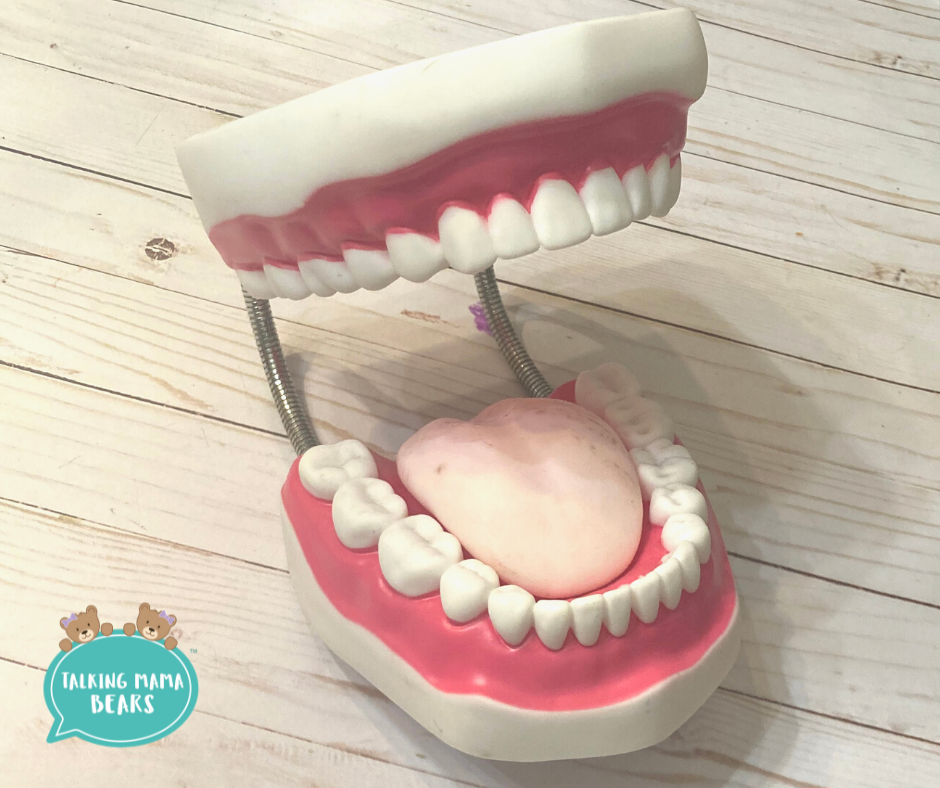
Mirror
Once you are able to isolate the target sound of /k/ or /g/, have students use a hand-held mirror to see exactly what their own mouths are doing. Have a discussion about how their mouths are open wide while their tongue moves up and back to touch the back of the throat. Our students are also so fascinated by watching themselves. Plus practicing sounds with a mirror is an easy fronting activity to suggest at home!
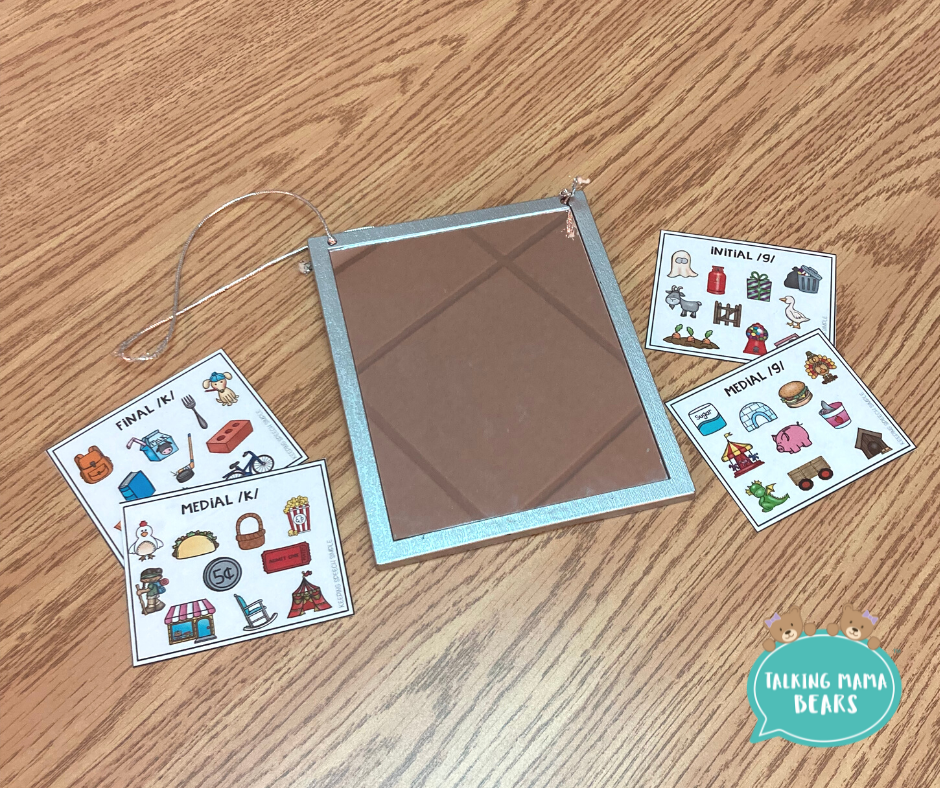
Tongue Depressors/Lollipops
If you are like us, you have a stash of tongue depressors in your office! If a student is having a hard time only visualizing tongue placement, these can be a great tool to help students physically feel where their tongues should be when targeting the phonological process of fronting.
Touch the back of the bottom front teeth to prevent the tongue from rising. Students can even bite the tongue depressor lengthwise and hold to keep the tongue tip down while “popping” their tongues back to produce the /k/ or /g/ sounds.
No tongue depressors on hand? Grab a lollipop instead! Lollipops can help isolate correct tongue placement as well…and typically students are highly motivated by them as well. 😄
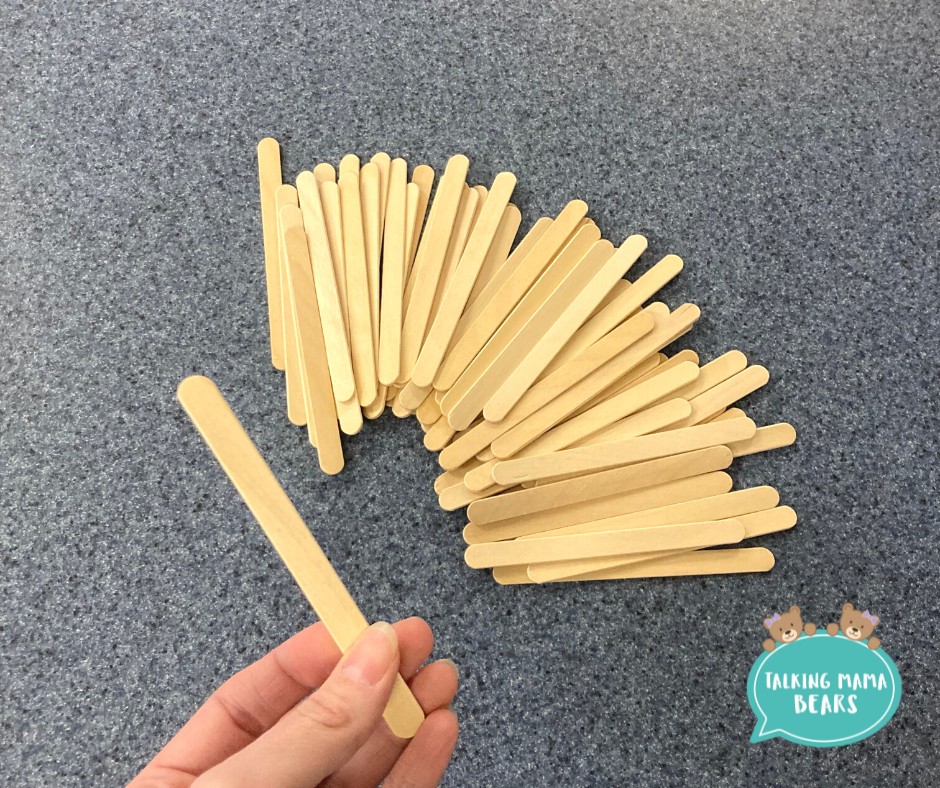
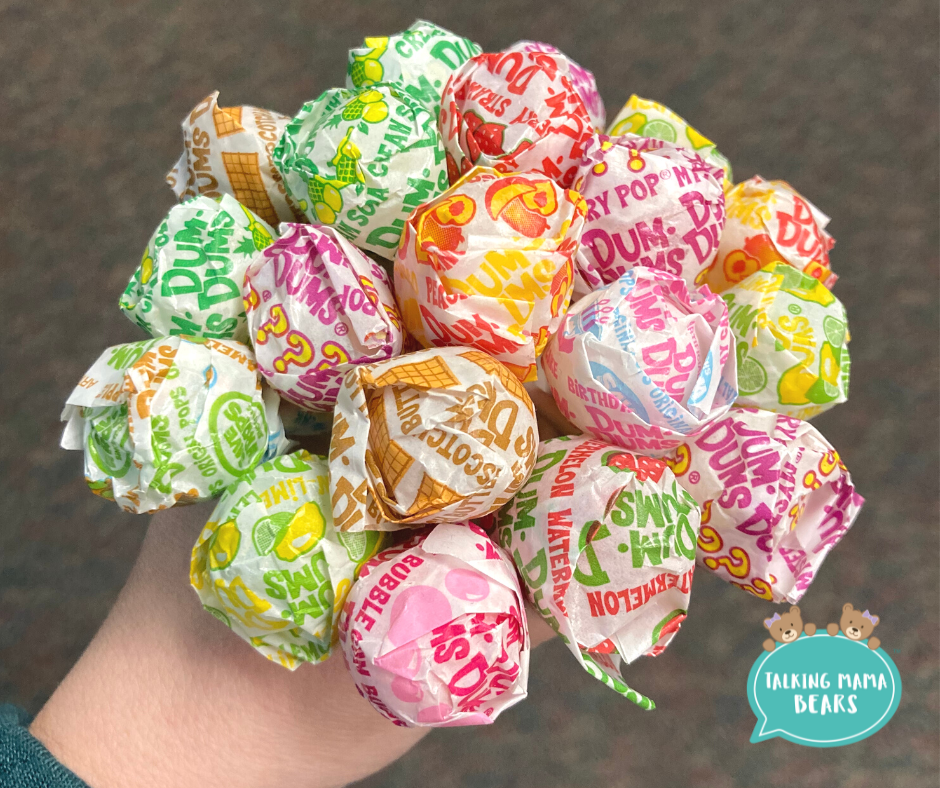
Self-Talk
While you are modeling sounds within your session, explain in conversation what your tongue is doing while attempting to eliminate the phonological process of fronting. When engaged in structured speech tasks, intentionally make an error. Then describe out loud what you did and how to fix it!
For example, say “I said ‘tow’. My tongue tip is by my teeth. I have to open my mouth and push my tongue up and back. Cow.” Having your student hear the error and the verbal correction will help with self-awareness and carry-over.
High Trials
Once you have a consistent and accurate production of /k/ or /g/, aim for high trials during your fronting phonological sessions. We like to set a goal with our students to attempt to produce their target sound over 100 times per session. This is a highly motivating goal for older students!
But remember, perfect practice makes perfect. Be sure to only attempt this once your student is able to produce their /k/ or /g/ sound in isolation consistently with little to no prompting. After that, go for the goal!
We like to use mini-erasers, stickers, or small objects to cover pictures when attempting super high trials during our phonological processes therapy. Using paint dotting pages is another easy way to encourage high production numbers as well. You can even use a clicker counter to tally productions!
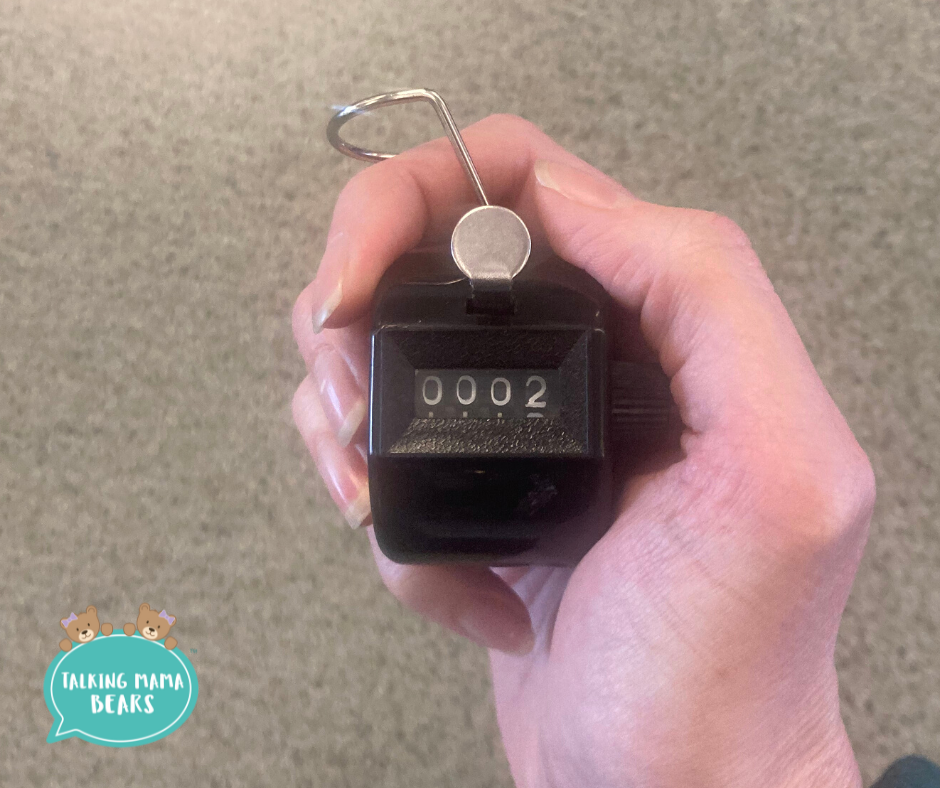
Word Lists
Word lists are great for targeting phonological processes since you can use them for a variety of tasks. Send lists home to parents for at home carry-over. Keep a list handy for any auditory bombardment or discrimination fronting activities. Give students word lists for practice while coloring or in between game play.
We always like to have students warm-up with their target sound before the structured speech activity. Students can quickly review the /k/ and /g/ words they will be hearing, seeing, and saying during the session. Check out our go-to word lists below!
- Home Speech Home
- Articulation Mini-Cards by Keep Speech Simple
- Speech Therapy Word Lists by Luke and Hollie
- Fronting & Backing Minimal Pairs by Rachel’s Speech Goodies
Also Read: The Ultimate List of Cluster Reduction Activities for Speech Therapy
Games
Once your students are easily producing their target sound in isolation and words, pick a game! Grab a generic game to practice in between or a game to work on the phonological process of fronting.
Need a quick and easy game to target the phonological process of fronting? Download our FREEBIE Bears /K/ Sound Board Game!
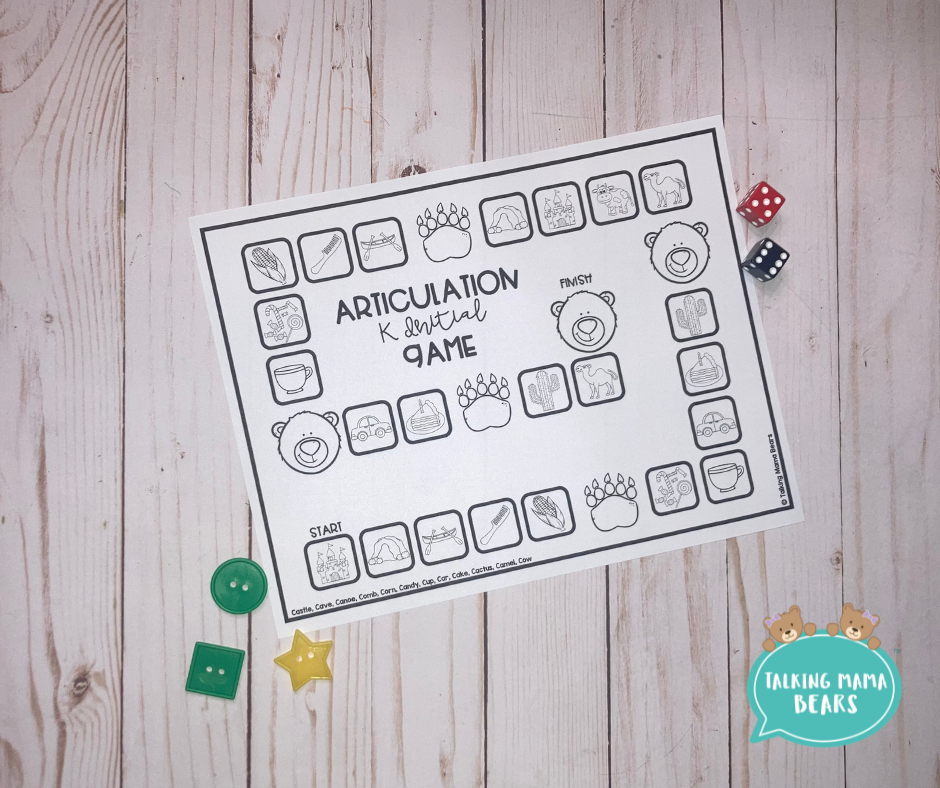
These board games are a simple, no fuss print and go fronting activity! All positions of the /k/ sound at the word level are included plus a mixed position board. They come in black and white and full color copies. Laminate for repeated use or have your students color their very own game board for even more practice!
Be sure to print the paper die template and bear game pieces that go along with the game board for a fun addition too. Otherwise, use any die or game tokens you have on hand!
We hope you found these fronting phonological process examples, tips, and ideas helpful. Need more inspiration for additional phonological processes activities? Check out our other posts on cluster reduction and final consonant deletion for more fun AND freebies!
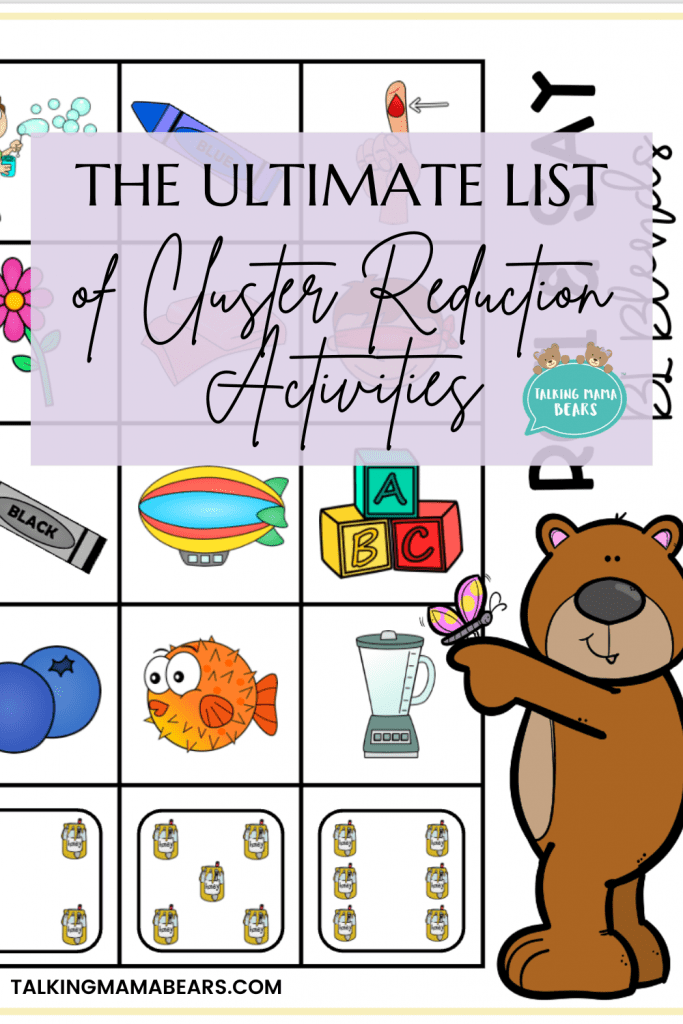

Have a great day, fellow SLPs!
Talking Mama Bears
